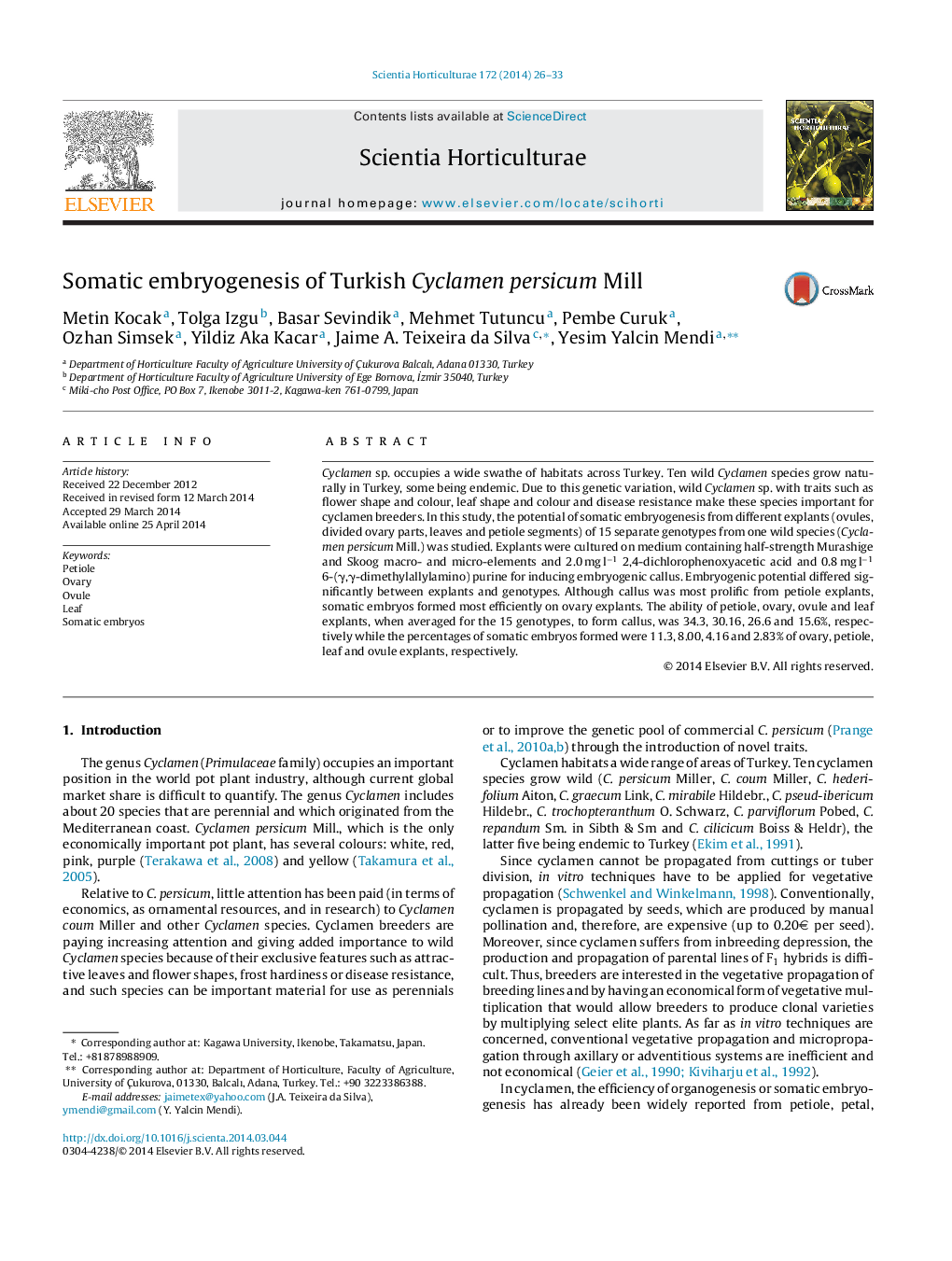| Article ID | Journal | Published Year | Pages | File Type |
|---|---|---|---|---|
| 4566809 | Scientia Horticulturae | 2014 | 8 Pages |
•In vitro culture of 15 plants from one wild Turkish Cyclamen species was studied.•Somatic embryogenesis was induced from different explants (ovules, divided ovary parts, leaf and petiole segments).•Embryogenic callus was induced on MS basal medium + 2 mg l−1 2,4-d + 0.8 mg l−1 2iP.•Petiole explants formed most callus but ovaries formed most somatic embryos.
Cyclamen sp. occupies a wide swathe of habitats across Turkey. Ten wild Cyclamen species grow naturally in Turkey, some being endemic. Due to this genetic variation, wild Cyclamen sp. with traits such as flower shape and colour, leaf shape and colour and disease resistance make these species important for cyclamen breeders. In this study, the potential of somatic embryogenesis from different explants (ovules, divided ovary parts, leaves and petiole segments) of 15 separate genotypes from one wild species (Cyclamen persicum Mill.) was studied. Explants were cultured on medium containing half-strength Murashige and Skoog macro- and micro-elements and 2.0 mg l−1 2,4-dichlorophenoxyacetic acid and 0.8 mg l−1 6-(γ,γ-dimethylallylamino) purine for inducing embryogenic callus. Embryogenic potential differed significantly between explants and genotypes. Although callus was most prolific from petiole explants, somatic embryos formed most efficiently on ovary explants. The ability of petiole, ovary, ovule and leaf explants, when averaged for the 15 genotypes, to form callus, was 34.3, 30.16, 26.6 and 15.6%, respectively while the percentages of somatic embryos formed were 11.3, 8.00, 4.16 and 2.83% of ovary, petiole, leaf and ovule explants, respectively.
